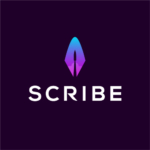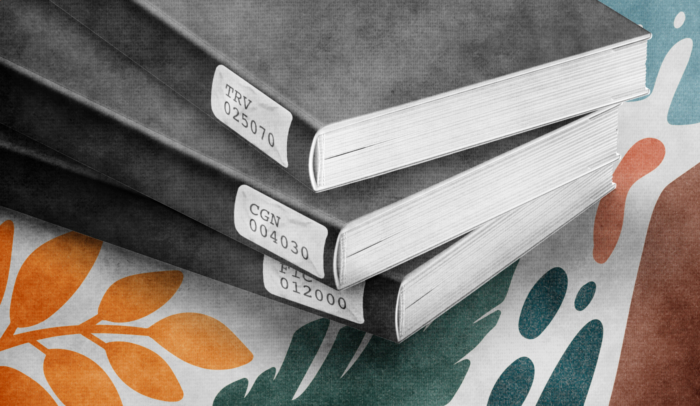There’s more to publishing than writing a book and selling copies.
If you want your book to succeed, you have to take some technical steps to make sure retailers can sell it and the right readers can find it.
I’ll be honest. They’re kind of a pain, but they’re necessary.
For instance, you have to get an ISBN and decide whether your eBook should be an ePub or MOBI file.
You also have to identify your book’s BISAC Codes.
I’m going to go out on a limb and guess that you’ve never heard of BISAC codes before.
BISAC codes are 9-character alphanumeric codes that tell book retailers, distributors, and librarians what categories and subcategories a book belongs in.
That might sound boring, but it’s really important. If you’re publishing a book, you will need them.
Is your book a self-help book or an inspirational memoir? Is it a marketing book or a sales book? Those are crucial distinctions for both sellers and buyers.
If you want your target audience to connect with your book, they have to be able to find it first. The categories you choose will have a direct impact on who sees your book and how they respond to it.
In this post, I’ll explain more about what BISAC codes are, why you need them, and how to choose the right codes for your book.
What Are BISAC Codes?
BISAC codes are sent to retailers as part of your book’s metadata. They tell retailers what your book’s subject, reading level, and genre are.
For example, when an online retailer sees the code TRV025070, they automatically know that the book’s subject is “Travel / United States / South / General.” Even if the title is Traveling through Old Tennessee, there’s no question whether the book belongs in the travel or history section.
Why is that important?
Imagine you run a bookstore that just received a shipment with hundreds of books that need to be shelved. Some might be thrillers; some might be young adult fiction. Another box might contain a mixture of North American history, European history, and political science books.
You’d want your employees to be able to shelve those books quickly. It would be a huge waste of time if they had to flip through the pages of every book to figure out if it’s a self-help book or a memoir.
Also, it can’t be up to the discretion of the individual employee. One person might think a book of landscape photographs belongs in the photography section. Another might think it belongs in “Nature.” Booksellers need a standard way to figure out where a book goes.
Where the book ends up could make a huge difference in whether the right reader finds it.
That’s why BISAC codes were created.
Subject codes make it easier for readers to find the content they want.
That makes it more likely a book will sell.
The BISAC subject heading list was created by the nonprofit Book Industry Study Group. BISAC is an acronym for Book Industry Standards and Communications, and as the name implies, they’re standard across the entire publishing industry.
BISAC codes ensure that no matter where you search for a book—a brick-and-mortar bookstore, Amazon, or an online library catalog—you’ll always find it under the same category.
Of course, there are other ways to organize books. You’re probably familiar with older book organization systems like the Dewey Decimal System or the Library of Congress Classification.
Here’s the problem with those systems: they’re slow to change, which means they aren’t always useful.
Here’s an example: for most of the 20th century, the Dewey Decimal system classed books on homosexuality under “mental derangements,” “abnormal psychology,” and “social problems.” Because the system was only updated occasionally, those classifications had staying power.
Currently, libraries use the 23rd edition of the Dewey Decimal system, which places homosexuality under the category “sexual relations.” That’s certainly a more current category, but it’s still behind the times.
The 23rd edition was released in 1996—24 years ago! Since then, perspectives on homosexuality and many other topics have changed significantly. The “newest” edition isn’t really all that new.
BISAC Codes are updated every fall. That means they do a better job of keeping up with industry trends and reader interests.
Do I Need BISAC Codes?
Yes. You do.
Every book retailer uses BISAC codes.
Ingram, Baker & Taylor, Barnes & Noble, and all other book distributors will expect them to be a part of your book’s metadata.
Even if you’re only planning to upload your book to Amazon’s Kindle Direct Publishing (KDP), you’ll need to provide BISAC codes.
Pro Tip:
KDP requires you to choose both categories and keywords for the books you publish. It’s important to understand the difference.
Amazon uses categories to organize their database. That means that when you browse or look at bestselling books, you’re seeing results based on their categories.
Amazon’s list of categories is almost identical to the BISAC list. So if you already have a definitive set of codes, it will be much easier to choose Amazon’s categories.
Keywords are the terms that readers type into the search box when they’re looking for a particular book.
How do I pick my BISAC subject codes?
Most retailers let you choose up to 3 BISAC codes.
Whatever their maximum limit is, meet it. The more categories your book is listed under, the more opportunities search engines have to send potential buyers your way.
Never waste an opportunity to make your book more visible.
Pro Tip:
KDP allows Authors to choose 2 categories to start with, but you can add up to 10 through the Author Central program. This post on Amazon categories will teach you how.
In the next section, I’ll explain how to choose your top 3 BISAC codes and then find the one code that fits your book best.
As you proceed, keep these considerations in mind:
- Who are your competitors? How are their books categorized? Even if you can’t see their exact BISAC categories, you can use Amazon categories to get a general sense of the terms they’ve used to describe their books.
- Who’s your target audience? How would they describe the book they want to read?
- What’s your main approach or objective with the book? What topics come up the most? Your book may touch on a wide range of subjects, but some are always more important than others.
Choosing BISAC codes might seem tedious, but remember, it’s an important part of effective book marketing. You want to do it right. Readers have to be able to find your book before they can buy it.
Step 1. Go to the Full BISAC List
You can find the full BISAC Subject Heading List on the BISG website.
There’s a paid version available to institutions, but the free version will work for your purposes.
Step 2. Find Your Book’s Top-Level Category
The 2019 list has 53 options for your main category.
Look through all the options, and decide which ones best describe your book.
Sometimes the choice will be obvious. If you’re writing a book about business, “Business and Economics” is going to be your top-level category, hands down.
Sometimes your book might fit into several categories. For example, if your book is about wellness, you might choose “Body, Mind, and Spirit” or “Health & Fitness.”
For this first step, it’s okay if you have multiple top-level categories. Make a note of the ones that apply and move to the next step.
Step 3. Drill Down to the Best, Targeted Fit
Once you’ve picked a good main category, you still need to find suitable subcategories.
Click your main category and read through the entire list of subheading options.
Make a note of the ones that fit your book. Try to be as specific as possible.
You might think that choosing a broad category will open your book up to more readers.
That’s incorrect.
Listing a book under “Fiction/ general” will be much less effective than labeling it “Fiction/ African American / mystery-detective.”
There are 3 main reasons why:
- The more specific your category, the fewer books you’ll be competing against for readers’ attention. If you place your book under “general fiction,” it will get lost among millions of other fiction books.
If you place it under “Fiction/ African-American / mystery-detective,” you’ll be vying for attention among a much more limited group of books. - The more specific your book category is, the more likely you are to reach your target audience.
A person in the market for “fiction” might be looking for anything from a science-fiction thriller to a young adult fantasy.
But a person in the market for African-American fiction will be more likely to buy your book. And a person who wants an African-American mystery is even more likely to buy it.Contrary to what you might expect, most bestsellers don’t target a broad audience. They know how to reach a “microtribe”—the true fans who will go out and rave about the book to everyone they know.Your goal is to get visibility for your book, but you also want to attract the right readers.By drilling down your category, you’re zeroing in on your target audience.
- It’s actually useful for your book to be side-by-side with similar books.
Have you ever wondered why fabric retailers open their businesses in the same district? Or why three coffee shops pop up on the same street?
That’s because “competitive clusters” can actually stimulate business.
Let’s say a reader loves Tim Ferriss’ The 4-Hour Workweek and wants to find other books like it.
If your book is also categorized under “Business and Economics/ Time Management,” it will probably be shelved nearby (or several clicks away on Amazon). When that reader looks for recommendations, they’re likely to notice your book.
Situating yourself in the right cluster improves the discoverability of your book. And discoverability drives sales.
Step 4. Choose the 3 Best Options and Rank Them
You should now have a list of possible categories.
Now, go through and choose the 3 options that best describe your book.
If you’re having trouble deciding, go back to the questions I listed above.
Let’s say your book fits into both “Business and Economics/ Marketing/ Internet” and “Business and Economics/ E-Commerce/ Digital Marketing.” How do you choose between them?
Think about the objectives of your book. Does it focus more on online marketing, or is it more about selling products online?
Who is your target audience? Are you speaking more to marketers or to people who manage e-commerce sites?
These are fine distinctions, but if you’re clear on your book positioning, one option will be more accurate.
Once you’ve chosen your 3 top codes, get even more selective. Which one is the absolute best?
Retailers weight the three BISAC codes differently, but the first code you list will always be the most important.
Step 5. Enter Your BISAC Codes
This will be different depending on which platform you’re using, but inevitably, there will be a step in the process where you’ll be asked to enter your codes.
No matter what platform you’re on, remember: put the most important code in first.
On Amazon’s Kindle Direct Publishing, you’ll enter your BISAC codes when you set up the title of your book.
You’ll also select Amazon keywords. These are an important part of how Amazon organizes its eBook database. Read our post on selecting solid keywords to learn more.
Your BISAC codes, along with your keywords, determine which categories Amazon chooses for your book.


